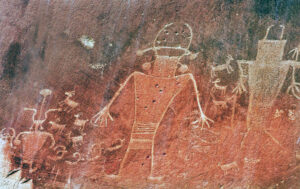November is Native American Heritage Month, a time to honor the rich histories, cultures, and contributions of Indigenous peoples in the United States. There are many ways to celebrate their heritage.
- Recognize their contributions to American History from agricultural practices (such as the three sisters: corn, beans, and squash) to their military service, contributions to the arts, and their environmental stewardship.
- Many people are unfamiliar with Native American culture, language, and heritage. This month provides an opportunity to explore their unique traditions and beliefs and promote cultural awareness in order to correct misunderstandings.
- Celebrate their resilience. Despite the challenges they faced, Native People have endured and even flourished. Celebrate their strength, creativity, and contributions to society.
- Indigenous people suffered under centuries of suppression, even violence. Recognizing this injustice helps us understand the importance of respecting the rights of others.
- Learn more about issues currently affecting communities today, such as environmental protection, education, and healthcare.
I did not know that there are 574 federally recognized tribes in the United States today, as well as hundreds of state-recognized tribes that hold legal status within their particular state. Based on their linguistic and cultural beliefs, these individual tribes fall into many different nations, and their similarities can be defined by the regions where they lived.
- Northeast—Iroquois, Algonquin, Wabanaki, and others. These tribes can be found in forested areas with rivers and lakes from the Great Lakes to the Atlantic coast. They lived in settled villages and practiced farming, which they supplemented with hunting and fishing. They lived in longhouses that supported multiple individual families. The tribes formed alliances and had sophisticated governments made up of councils from individual member tribes.

- Southeast—Cherokee, Choctaw, Creek, Chickasaw, Seminole, and others. These preferred fertile plains with warm climates to support farming, in addition to forests and wetlands. They were known for their agricultural practices, though they also gathered food and hunted. Typically, they live in framed houses of wood covered with mud or clay, known as wattle and daub. They had a centralized form of government composed of chiefdoms. These tribes were known for the Green Corn Ceremony of renewal and giving thanks.

- Great Plains—Lakota, Cheyenne, Comanche, Blackfeet, and others. These tribes maintained vast herds of buffalo on expansive grasslands stretching through the Midwest from Canada to Mexico. Living in portable tipi, they led a nomadic lifestyle following the buffalo. The acquisition of horses in the 1700s significantly improved their mobility and warfare tactics. Leadership was often won by battle and hunting skills.

- Southwest—Navajo, Apache, Hopi, Zuni, Pueblo peoples, and others. These tribes lived in deserts and other areas with limited rainfall. They perfected methods of dry farming, particularly with corn, beans, and squash. Often, they built irrigation systems and understood water management. They lived in multi-storied adobe homes often built into cliffs. The Navajo built dome-shaped structures out of wood and mud known as hogans. They had a decentralized, clan-based form of government.

- Northwest Coast—Tlingit, Haida, Salish, Makah, and more. These people lived in coastal forests along waters filled with salmon and other fish. They were skilled in woodworking, fishing, and whaling. Their cedar-planked houses were adorned with totem poles telling their stories. They were known for ceremonies where wealth and leadership were redistributed through the practice of gift-giving.

- California—Pomo, Chumash, Miwok, Yokuts, and others. These tribes welcomed a mix of diverse resources from living in coastal, forested, and desert lands with mild weather. They were skilled hunters and foragers living off game, fish, nuts, and acorns. Their homes were simple structures, often dome-shaped, suitable for the moderate climate. Their organizational structure was based on small villages with localized leadership. This was usually followed a familial hierarchy.

- Great Basin—Shoshone, Paiute, Ute, and others. Their lands comprised a harsh, dry region stretching across Nevada and Utah. These people were nomadic hunter-gatherers who relied on seasonal plants, small game, and fishing. They lived in temporary brush shelters made of branches known as wikiups. They favored a more decentralized, flexible leadership structure where families moved independently and shared resources.

- Plateau—Nez Perce, Spokane, Yakama, and others. These tribes can be found in the river valleys and mountains of the Rocky Mountains and Cascades. These areas were rich in fish, such as salmon, and game, which were supplemented by foraging. During the hunting season, families lived in temporary frame-covered houses. In the winter, subterranean pit houses kept them safe and warm. These tribes formed loose alliances where leaders were chosen based on their wisdom.
As a Midwesterner who has spent half her life on the East Coast, I learned a lot about the native people while reading about each region. Many of them were unfamiliar to me. How well do you know the Indigenous people in your area?

As always, an excellent article Carol. You always provide great information that most would never read except for your articles. Keep up the great work. I hope your next book in the Celtic series will be out soon.
Thank you! As you know, I love the research.